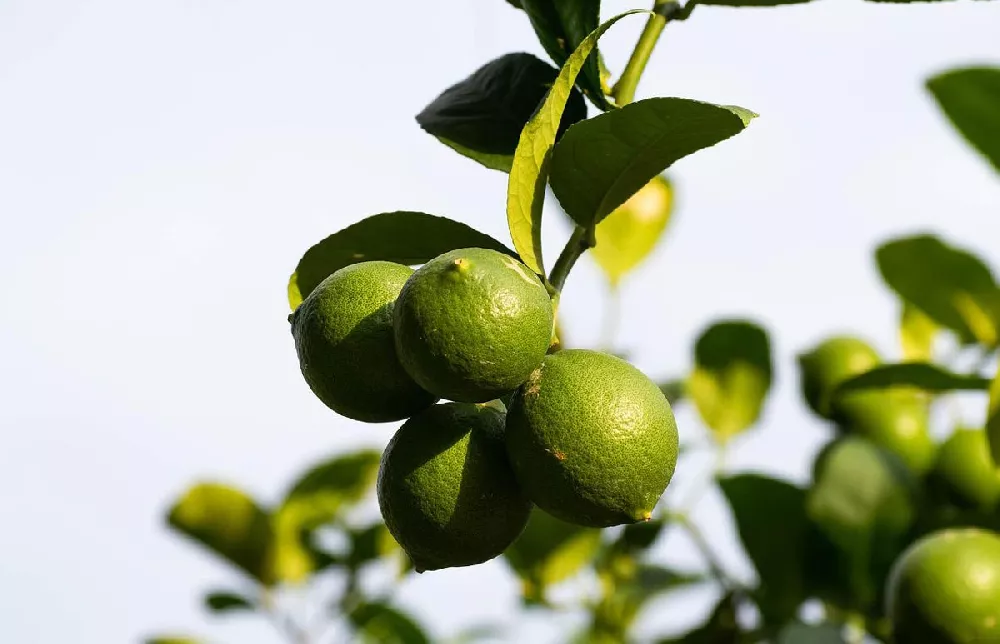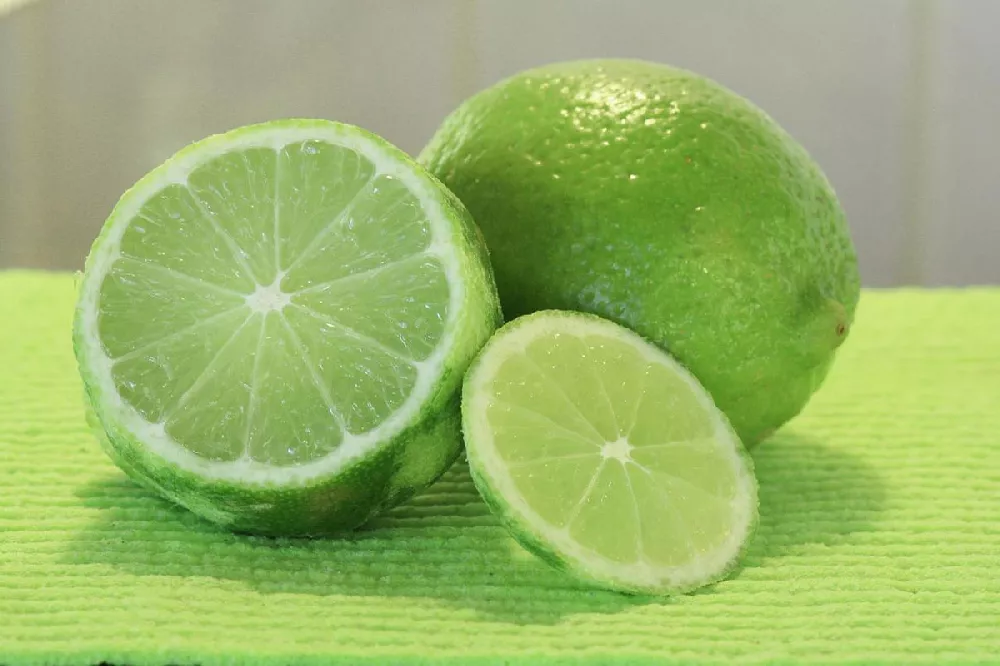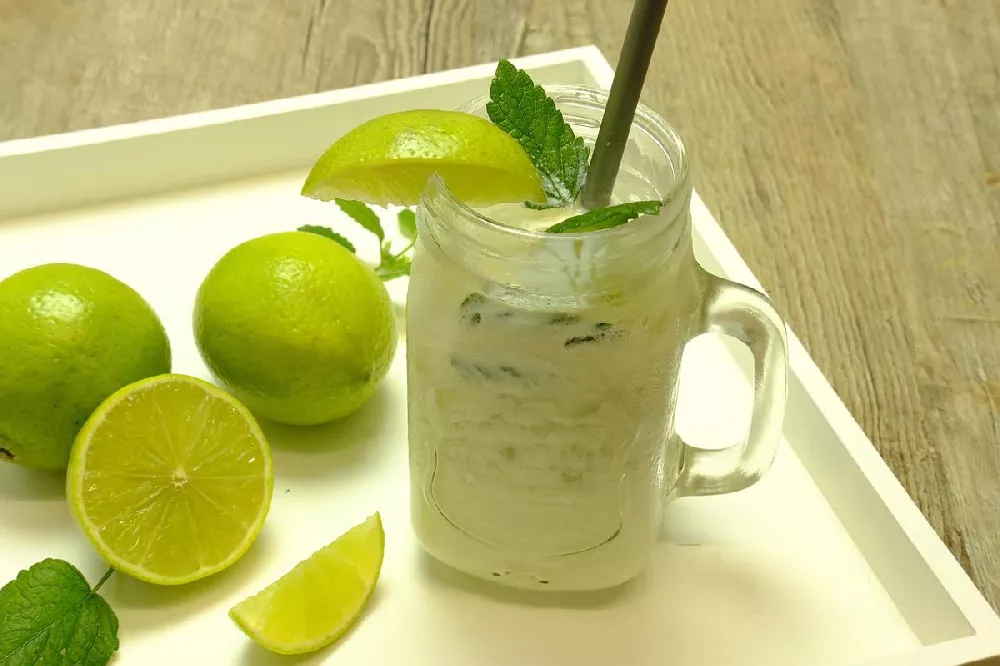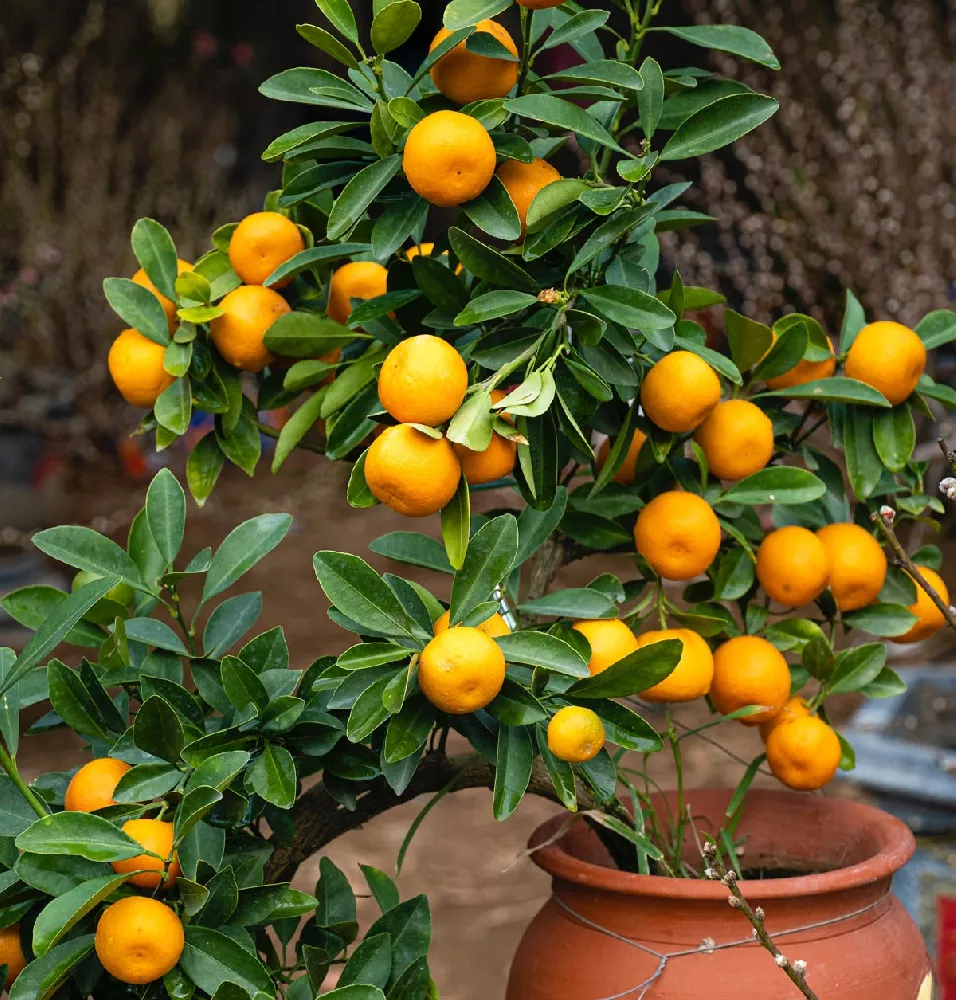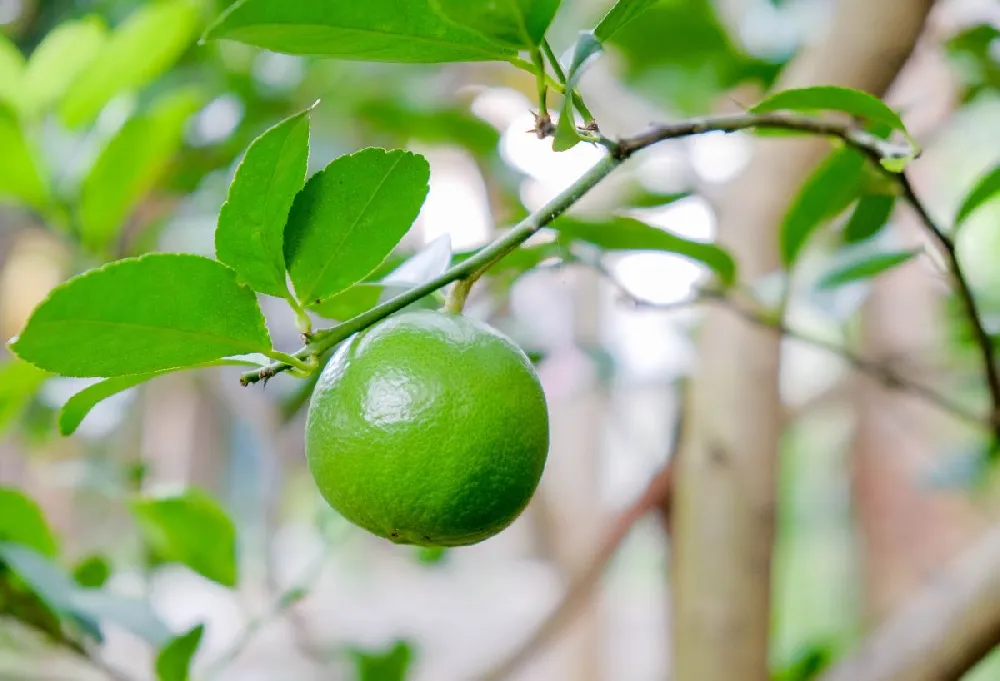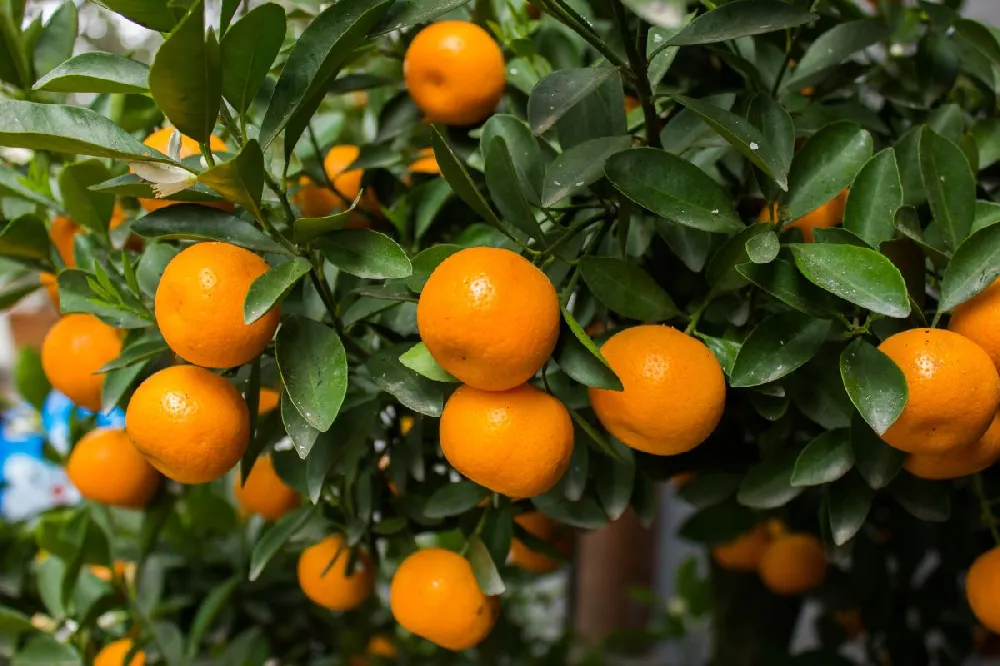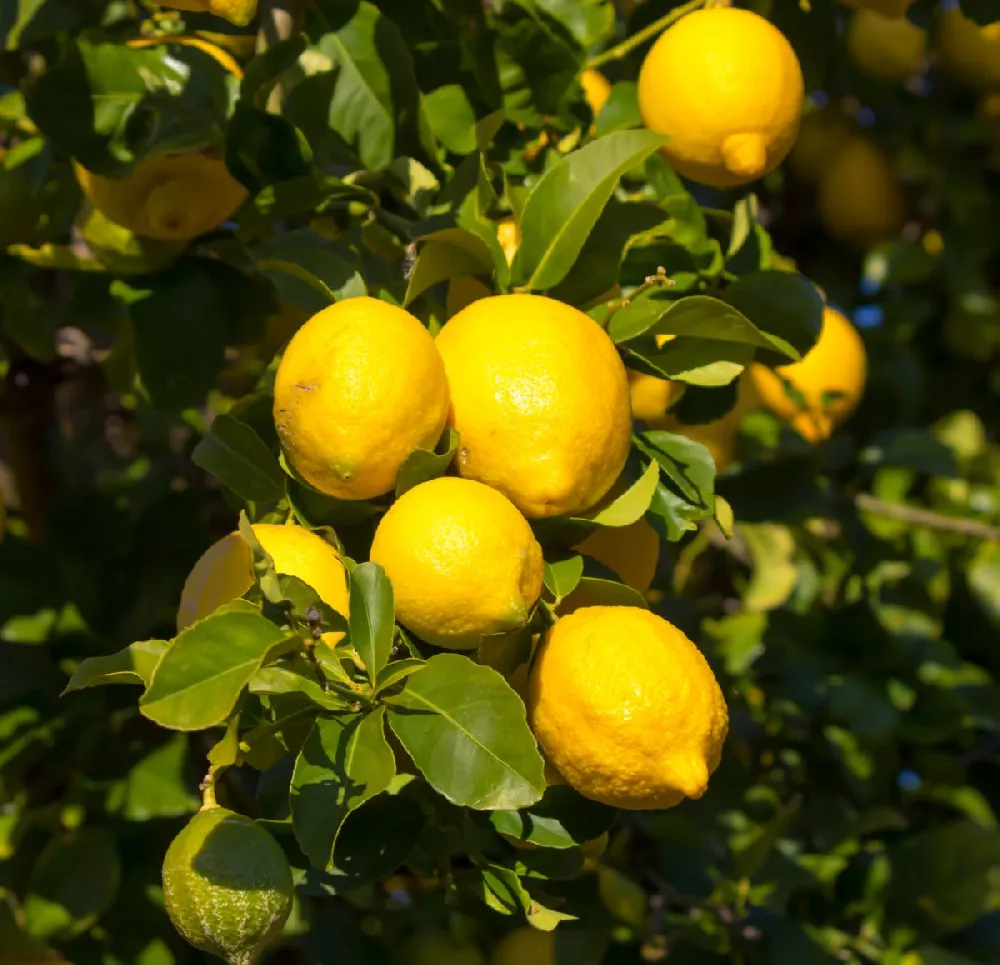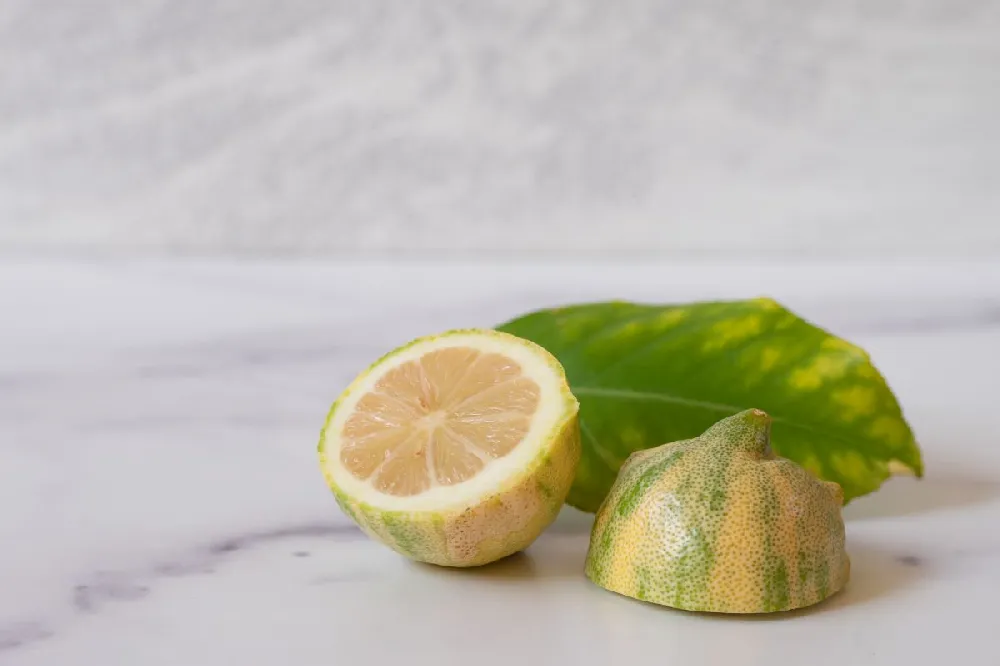- Home >
- Edible Plants >
- Key Lime Tree
Key Lime Tree for Sale
- Ships in 1-2 days
- 1-Year Warranty Eligible
- Pots or accessories are not included unless specified in the product options.
Shipping Details:
Products shipped through FastGrowingTrees.com. Once your order is shipped, you’ll receive an email with a tracking number and estimated delivery date. Most orders will ship immediately.
The Key lime tree, also called Mexican lime, or Citrus x aurantiifolia, is a splendid small tree that is easily grown in backyards and on patios in a sunny location. It is disease- and pest-resistant, and as an added bonus, a healthy tree produces small fruits that are renowned for use in Key lime pies and as the lime of choice for bartenders the world over. But there's more: The Key lime tree is also an attractive plant, with dark glossy green leaves and a bushy full canopy that makes it an excellent specimen tree in a formal or informal garden — as well as an attractive tree for ornamental container growing. Here are a few more reasons why you need a Key lime tree in your garden:
- Healthy trees can produce fruit in as little as one year after planting.
- In spring, beautiful pink-white flowers have an attractive and heady scent.
- Can be container-grown throughout the continental U.S. and garden-grown in the south.
Plant Care
Sunlight

Key lime trees need full sunlight — at least six to eight hours a day of direct sunlight.
Watering
Water deeply once a week, allowing the soil to dry out to a depth of 2 to 3 inches in between waterings.
Fertilizing

Fertilize throughout the growing season with a product designed for citrus trees, preferably one that is high in nitrogen.
Planting and Care
Planting instructions
If planting outside, site your Key lime tree where it will get plenty of sunlight, in soil that drains well. Unpot the sapling, and tease out any encircling roots, as they can girdle the tree and eventually kill it. Dig a hole that’s a little deeper than the root ball and twice as wide. Throw a few handfuls of well-rotted compost or manure in the bottom of the hole and place the tree on top. Hold it upright and steady, and fill in around it with good quality topsoil, tamping down as you go to eliminate air pockets. Water thoroughly. Place a 2- to 3-inch layer of an organic mulch, such as bark chips, around the tree’s root zone to conserve moisture, being careful that it does not touch the trunk itself.
Watering and nutrients
Your Key lime tree will benefit from about an inch of water a week. If you do not receive this from rain, give your tree supplemental watering, aiming the hose at the root zone to avoid wetting the leaves. When newly-planted, water your plant more frequently until you see robust new growth on the sapling. Fertilize your tree throughout the growing season with a fertilizer that is designed for citrus trees. Follow package directions for application times.
Pollination
Key lime trees are monoecious, meaning that a single plant will have male and female reproductive parts. What that means to you is that you are able to have a harvest even if you only have one tree. Insects such as bees generally do the work of moving the pollen from one flower to another, but you can help them along by using a small paintbrush to take up pollen in a similar manner and move it from flower to flower.
Pruning
Generally, once your Key lime tree is mature, the only pruning you’ll need to do will be to cut out dead, broken, or diseased branches when you see them. In addition, remove any suckers that appear near the base of the tree. A young tree may need light pruning for shape or to open up the canopy, but unlike some fruit trees, Key limes trees do not need an annual heavy pruning.
Pests and diseases
Key lime trees are quite hardy and have few pests or diseases. You may occasionally see scale insects or leaf miners, and citrus mites can damage young trees. Control insect infestations by releasing beneficial insects such as parasitic wasps, or, as a last resort, using insecticides. Neem oil may also prove helpful. Diseases include lime anthracnose, collar rot, and fusarium oxysporum. Key lime trees kept indoors are unlikely to experience any of these diseases.
Harvesting
It can be difficult to determine when limes are ripe for picking. Look for limes that are lighter in color and starting to turn from green to a more greenish-yellowish hue. Twist one off the tree — if it comes off easily it’s more likely to be ripe — and check if the fruit inside yields a good amount of juice. The fruit also turns slightly softer when ripe. Fruit that appears wrinkled is overripe and will be bitter.
Achieving maximum results
Growing a Key lime tree outside is a great idea for those in the Deep South and Pacific Northwest. But what about those in northern states? No worries: the Key lime tree adapts beautifully to container growing. Choose a container with good drainage holes that’s roughly twice the size of the tree’s root ball. Use a good-quality potting mix, preferably one recommended for acid-loving plants, and plant your tree as we’ve suggested in the directions for outdoor planting. You’ll get the best results if you keep your Key lime tree outside for the summer months. Bring your tree inside when temperatures get near 30 degrees Fahrenheit or when a frost is predicted. Place your tree in a sunny window, and turn it occasionally so that the whole tree gets sun. Wipe down the leaves occasionally to minimize dust, and mist the leaves to help it stay hydrated.
FAQs
What's the difference between regular limes and Key limes?
The two are related, but are not the same thing. Key limes are slightly smaller than regular limes — about the size of a golf ball — and they have thinner skin. They are more fragile, so they are less likely to be seen in the supermarket, but they are prized for their aromatic flavor. Although the flavor of the two is different, with key limes having a more tangy flavor, they can be used interchangeably in most recipes.
How long does it take a Key lime tree to produce fruit?
A healthy Key lime tree will begin to produce fruit within one to three years after it is planted. A tree planted outdoors is more likely to have a robust harvest in the first year or so, but a well-cared-for container-grown Key lime tree may also produce fruit. Your Key lime tree should flower in spring. If the flowers fall off with no sign of fruit, the tree is likely still too young.
When can I bring my Key lime tree outdoors?
Wait until after your last expected frost date before you bring your Key lime tree outside. Acclimate it to the weather by first moving it outdoors just for the daytime, bringing it in during the cooler night. After doing this for a week, you can leave it outside as long as your nighttime temperatures don't go below 30 degrees Fahrenheit.
Compare Similar Products
You can't add more Product Name - Product size to the cart.
OK